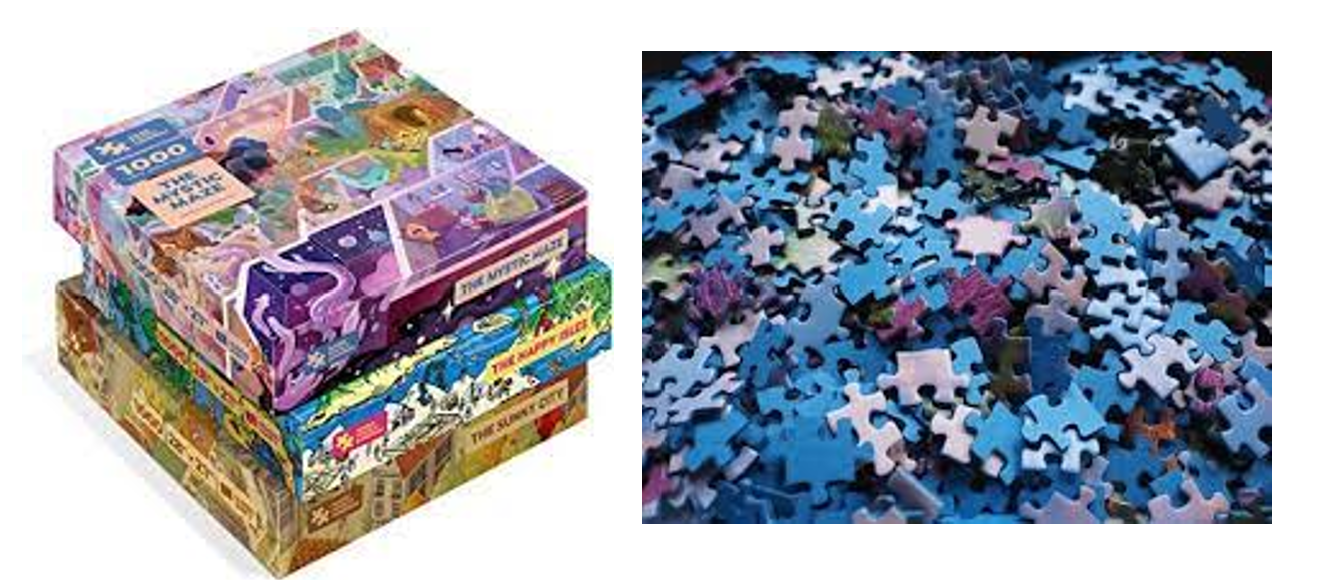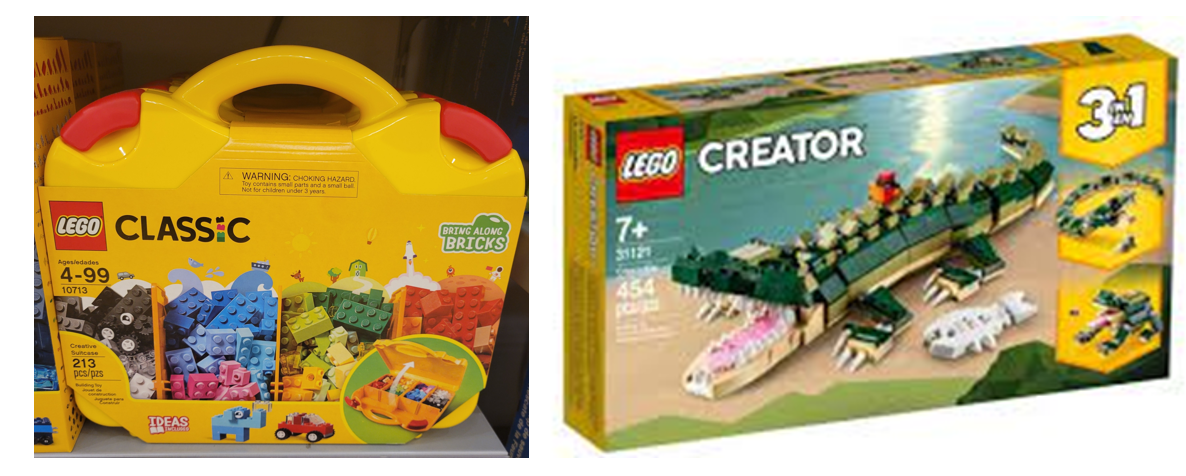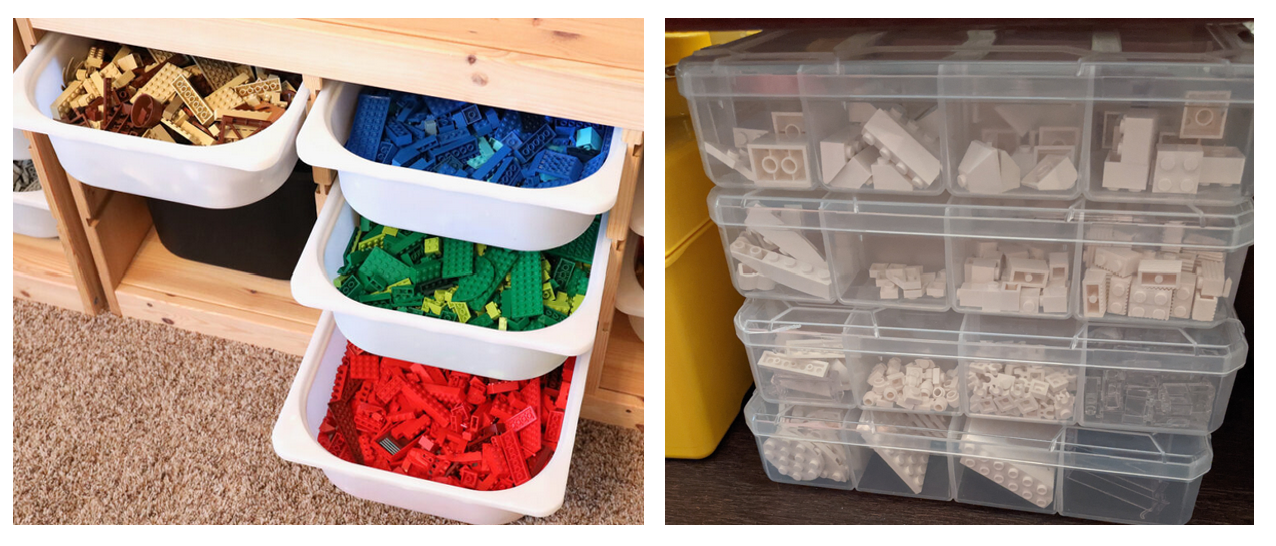7 How Many Things Is That?
(How “Things with Parts” Can Make the WHAT Question Tricky)
- A “picture” is one thing
- “Pieces of different shapes” are many things
So this is a harder question to answer that it seemed at first.


But after you had played with Legos for a few years, you began to think of them differently. You began to use the color, shape, and size of Lego pieces as organizing principles so you could build new things, not just the boxed set things. So while you still had some boxed Lego sets, you now had many hundreds of Lego pieces you organized into much smaller categories. You probably had storage boxes like these:

Why does this question of thingness or granularity matter? It matters because sometimes two people will not answer the question the same way. If a parent wants a kid to organize his Legos, they might buy a bookcase and tell the kid to store the boxes there. But if the kid is an expert who wants to organize the pieces into many categories, the bookcase isn’t going to help at all.
This question is very important when we think about organizing time, because “pieces of time” come in very different sizes. You will see this in an upcoming chapter.

